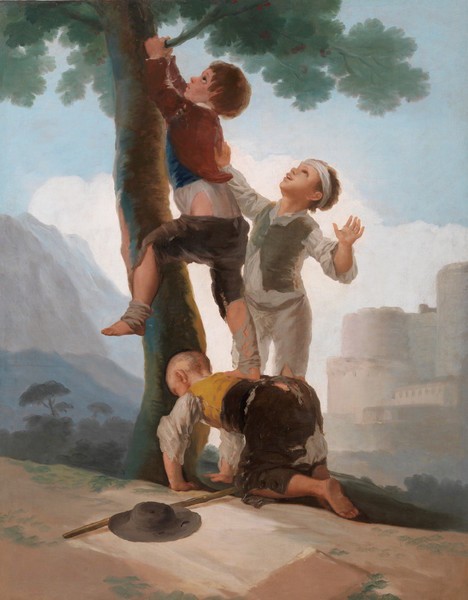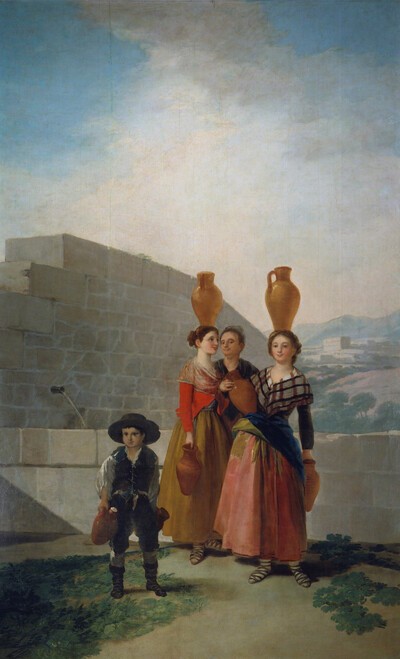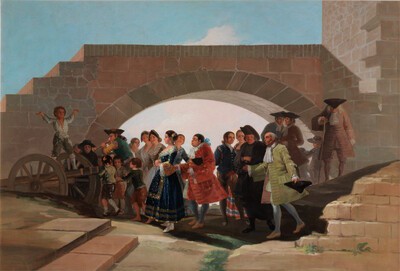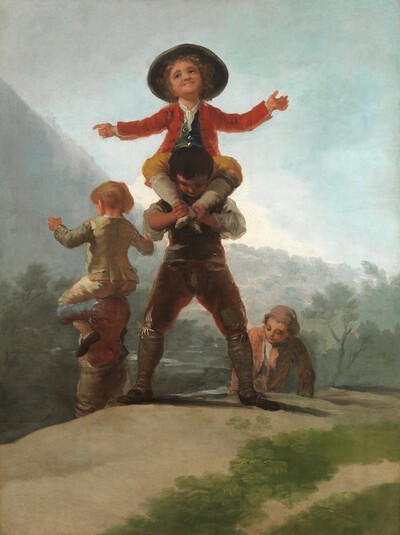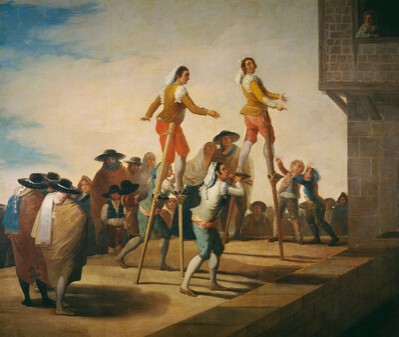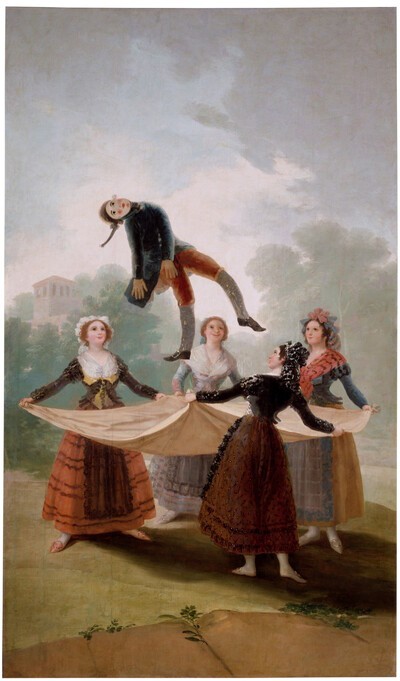- Cronología
- 1791 - 1792
- Ubicación
- The Prado National Museum. Madrid, Madrid, Spain
- Dimensiones
- 141 x 111 cm
- Técnica y soporte
- Oil on canvas
- Reconocimiento de la autoría de Goya
- Documented work
- Titular
- El Prado National Museum
- Ficha: realización/revisión
- 27 Dec 2009 / 14 Jun 2023
- Inventario
- (P00803)
See The Wedding.
Boys Climbing a Tree is an overdoor piece, the companion of The See-Saw and Chicken Fights.
In the image we see three boys trying to climb a tree. One of them crouches on all fours so that another can stand on his back, whilst the third pushes him upwards.
The composition is very similar to that of another tapestry cartoon, Boys Picking Fruit, an overdoor made for the series that adorned the dining room of the Prince in the palace of El Pardo in 1778. The intervening years between the two paintings allow us to see the evolution that Goya has undergone: now space is articulated through the figure itself and its position, rather than through multiple planes. The images are clearer in order to make them easier to read, with overcrowding avoided.
As with its companion overdoor pieces, Tomlinson interprets this painting as a representation of the political instability that Spain was suffering following the French Revolution.
-
El arte de GoyaMuseo de Arte Occidental de TokioTokyo1971from 16th 1971 to January 23th 1972. Exhibited also at the Kyoto Municipal Museum of Art, January 29th to March 15th 1972.cat. 101
-
GoyaPalacio de PedralbesBarcelona1977from April 12th to June 30th 1977cat. 14
-
Goya. 250 AniversarioMuseo Nacional del PradoMadrid1996consultant editor Juan J. Luna. From March 29th to June 2nd 1996cat. 57
-
Goya luces y sombrasCaixaForumBarcelona2012consultant editors José Manuel Matilla and Manuela B. Marqués. From March 16th to June 24th 2012cat. 10
-
Goya en Madrid. Cartones para tapices 1775-1794Museo Nacional del PradoMadrid2014p. 207
-
Goya: Order and disorderMuseum of Fine ArtsBoston2014cat. 137
-
Zaragoza2017cat. 30
-
L'œuvre peint de Goya. 4 volsParís1928-1950vol. I, p. 102, cat. 43
-
Tapices de GoyaMadridPatrimonio Nacional1946pp. 150, 170, 172, 278, cat. 63 y láms.
-
Vie et ouvre de Francisco de GoyaParísOffice du livre1970p. 100, cat. 302
-
BarcelonaPolígrafa1970vol. I, p. 283, cat. 305
-
L’opera pittorica completa di GoyaMilanRizzoli1974p. 105, cat. 261
-
Francisco de Goya, 4 vols.ZaragozaCaja de Ahorros de Zaragoza, Aragón y Rioja1980-1982vol. II, p. 90
-
Francisco de Goya, cartones y tapicescol. col. "Espasa Arte"Espasa Calpe1987pp. 170, 319, cat. 67C
-
Francisco de Goya. Los cartones para tapices y los comienzos de su carrera en la corte de Madridcol. col. "Ensayos de Arte Cátedra"MadridCátedra1987pp. 248, 250, 252 y p. 245 (il.)
-
Goya. 250 AniversarioMadridMuseo del Prado1996p. 338, cat. 57 y p. 143 (il.)
-
Goya en Madrid. Cartones para tapices 1775-1794MadridMuseo Nacional del Prado2014p. 207
-
Goya: Order & DisorderBostonMuseum of Fine Arts Boston Publications2014pp. 218-219
-
BilbaoFundación bancaria “la Caixa” y Museo Nacional del Prado2018p. 109
